
Diego Rivera, was a prominent Mexican painter. His large frescoes helped establish the mural movement in Mexican and international art.

Magdalena Carmen Frida Kahlo y Calderón was a Mexican painter known for her many portraits, self-portraits, and works inspired by the nature and artifacts of Mexico. Inspired by the country's popular culture, she employed a naïve folk art style to explore questions of identity, postcolonialism, gender, class, and race in Mexican society. Her paintings often had strong autobiographical elements and mixed realism with fantasy. In addition to belonging to the post-revolutionary Mexicayotl movement, which sought to define a Mexican identity, Kahlo has been described as a surrealist or magical realist. She is also known for painting about her experience of chronic pain.

Frida is a 2002 American biographical drama film directed by Julie Taymor which depicts the professional and private life of the surrealist Mexican artist Frida Kahlo.

Man at the Crossroads (1933) was a fresco by Mexican painter Diego Rivera. Originally slated to be installed in the lobby of the RCA Building at Rockefeller Center in New York City, the fresco showed aspects of contemporary social and scientific culture. As originally installed, it was a three-paneled artwork. A central panel, depicting a worker controlling machinery, flanked by two other panels, The Frontier of Ethical Evolution and The Frontier of Material Development, which respectively represented socialism and capitalism.

La Calavera Catrina had its origin as a zinc etching created by the Mexican printmaker and lithographer José Guadalupe Posada (1852–1913). The image is usually dated c. 1910-12. Its first certain publication date is 1913, when it appeared in a satiric broadside as a photo-relief etching.
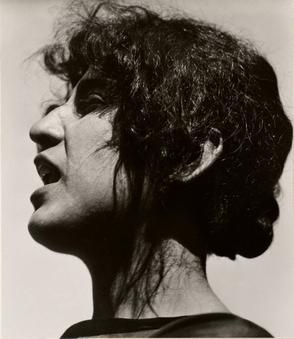
Guadalupe "Lupe" Marín, born María Guadalupe Marín Preciado, was a Mexican model and novelist.
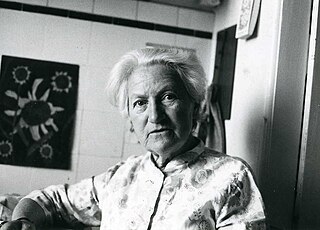
Lucienne Bloch was a Switzerland-born American artist. She was best known for her murals and for her association with the Mexican artist Diego Rivera, for whom she produced the only existing photographs of Rivera's mural Man at the Crossroads, painted in 1933 and destroyed in January 1934 at Rockefeller Center in New York City.

The Frida Kahlo Museum, also known as the Blue House for the structure's cobalt-blue walls, is a historic house museum and art museum dedicated to the life and work of Mexican artist Frida Kahlo. It is located in the Colonia del Carmen neighborhood of Coyoacán in Mexico City. The building was Kahlo's birthplace, the home where she grew up, lived with her husband Diego Rivera for a number of years, and where she later died in a room on the upper floor. In 1957, Diego Rivera donated the home and its contents to turn it into a museum in Frida's honor.

Sueño de una tarde dominical en la Alameda Central or Dream of a Sunday Afternoon at Alameda Central Park is a 15.6 meter wide mural created by Diego Rivera. It was painted between the years 1946 and 1947, and is the principal work of the Museo Mural Diego Rivera adjacent to the Alameda in the historic center of Mexico City.
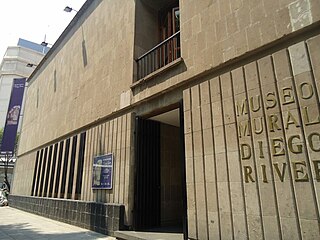
Museo Mural Diego Rivera is a museum in Mexico City where Diego Rivera's 1946–47 mural Sueño de una Tarde Dominical en la Alameda Central is located.

The Two Fridas is an oil painting by Mexican artist Frida Kahlo. The painting was the first large-scale work done by Kahlo and is considered one of her most notable paintings. It is a double self-portrait, depicting two versions of Kahlo seated together. One is wearing a white European-style Victorian dress, while the other is wearing a traditional Tehuana dress. The painting is housed at the Museo de Arte Moderno in Mexico City.

The History of Mexico is a mural in the stairwell of the National Palace in Mexico City by Diego Rivera. Produced between 1929 and 1935, the mural depicts Mexico's history from ancient times to the present, with particular emphasis on the struggles of the common Mexican people fighting against the Spanish, the French, and the dictators that controlled the country at different points in its history.

What the Water Gave Me is an oil painting by Frida Kahlo that was completed in 1938. It is sometimes referred to as What I Saw in the Water.
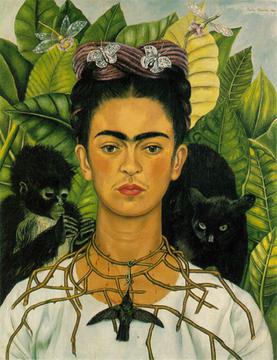
Self-Portrait with Thorn Necklace and Hummingbird is a 1940 self-portrait by Mexican painter Frida Kahlo which also includes a black cat, a monkey, and two dragonflies. It was painted after Kahlo's divorce from Diego Rivera and the end of her affair with photographer Nickolas Muray.
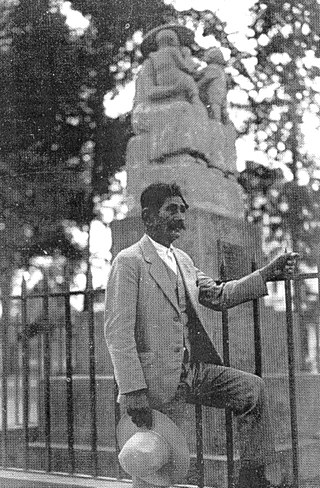
Mardonio Magaña-Camacho (c.1865–1947) also known as Magañita, was a Mexican educator and sculptor known for his folk art stone direct carvings, he was also known to work with wood and mud. He was a self-taught artist inspired by nature, that was "discovered" by artist Diego Rivera. It's said that Diego Rivera was quoted as saying Magaña was, "the greatest contemporary Mexican sculptor".
Cristina Kahlo y Calderón (1908–1964) was the sister of artist Frida Kahlo. Frida painted a portrait of Cristina, titled Portrait of Cristina, My Sister, and Diego Rivera, Frida's husband, also portrayed Cristina Kahlo in his work. Cristina, with whom Rivera had an affair, was painted by Rivera in the nude.

Frieda and Diego Rivera is a 1931 oil painting by Mexican artist Frida Kahlo. This portrait was created two years after Frida Kahlo and Diego Rivera married, and is widely considered a wedding portrait.

The Frame is a 1938 self-portrait by Frida Kahlo. The painting features Kahlo's self-portrait in oil on a sheet of aluminum framed in glass which she purchased from a market in Oaxaca, Mexico. Although the glass frame is included as part of the painting, the flowers, birds, and other details on the frame were painted prior to being purchased by Kahlo.
The Rivals is a 1931 oil-on-canvas painting by the Mexican artist Diego Rivera (1886–1957). It was commissioned by Abby Aldrich Rockefeller, the leading personage behind the inception of the Museum of Modern Art in New York City. Rivera created the work while on the ship SS Moro en route from Mexico to New York City. The picture portrays "Las Velas", a festival held in the Mexican state of Oaxaca, a fete in honor of local patron saints and of the abundance of spring.

















